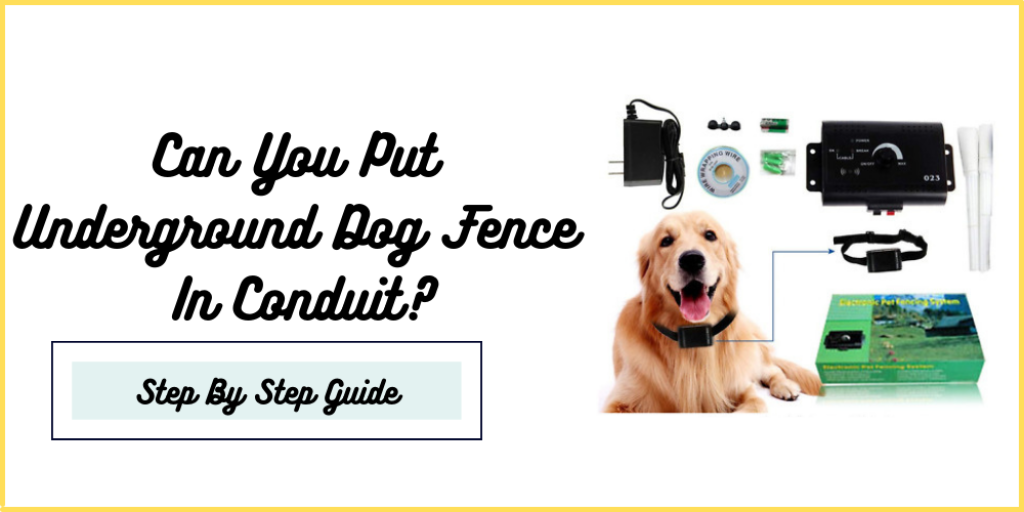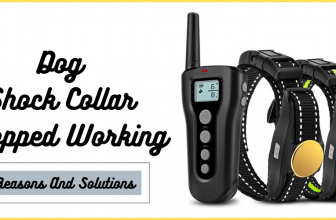Any underground dog fence provides great convenience while offering a secure area for dogs. These dog fence wires can be installed in the conduit. However, some key factors such as depth or burial area should be considered. This will make it easier to avoid weakening the signal.
Putting an underground dog fence in a conduit can be a great way to keep your pet safe and secure. The fence is buried underground, so your pet cannot see or reach it. This type of fence is perfect for dogs that are prone to escaping or being destructive.
Contents
Can You Put Underground Dog Fence In Conduit? – Ultimate Guide
Yes, you can put an underground dog fence in the conduit. Placing a fence in a conduit may be the best way to have a secure area. For that, people can bury the dog fence wire. However, this wire should not be buried too deep as this can somehow impair the functioning of the dog fence.
Different dog fences do not offer the same signal strength for operation. Anyway, we can consider 6 in is the limit to consider when it comes to burying this wire. So, if users bury the dog fence wire, the signal starts to weaken along with other functions.
It should also be noted that 6 in is the limit when it comes to the ground. When it comes to burying this wire under the sidewalk or driveway, it should only be 2 or 3 in. Of course, this happens because sidewalks or concrete are much stronger and more consistent materials.
Thus, this means that these materials can more efficiently block the signal that works with dog fence wire. When it comes to dirt and grass soil, this is a set of materials that do not offer great resistance to the signal from this wire.
It is also advisable to perform a series of tests once the dog fence wire has been buried in one or more types of soil. This is necessary to be able to detect if the signal has weakened or some functions have been impaired.
Also Read: How Strong is 14 Gauge Fence For Dog?
When To Use Conduit And When To Avoid Conduit
Any electrical system can operate more efficiently outside or inside every home if the proper electrical conduits are incorporated. It is an additional layer that allows all wires to be covered. In this way, both people and pets in the home will be able to obtain greater safety and protection against electrical hazards.
Any electrical wire can be somewhat dangerous when exposed. At the same time, dog fencing wire can also deteriorate and lose much of its useful life without proper electrical conduits. These electrical wires can be protected against all kinds of external factors, such as weather conditions.
When it comes to incorporating conduit into a wire inside a home or other structure, it is also necessary to know when to use it. Using ducts indoors can help prevent bites from different types of rodents.
These small animals can cause enough damage to be able to weaken the performance of underground dog fence wire.
Here are some situations to use a conductor:
- In hazardous weather conditions
- To reduce danger to people
- To avoid bites from some animals
- To organize the dog fence wire more efficiently
- To optimize the lifetime of the wire
In addition to all the above, laying a conduit for dog fence wire is not always advisable. There are some situations in which it may be useful to avoid the conductor.
That is why we can consider some situations to avoid conduit:
- When the wire is buried
- When the signal is too weak
- When the wire must be installed under a sidewalk or driveway
How Deep Can You Bury Conduit With Your Underground Dog Fence Wire?
Burying the dog fence allows for greater organization and avoids any type of tripping. However, it should be noted that burying the underground dog fence may result in a weakening of the signal. In most cases, it is recommended to enter the fence at only 6 in when dealing with conventional soil.
The minimum depth is 3 in while the maximum depth can be up to more than 20 in. When choosing the exact depth for your fence, there are a few key factors to consider. One of the main factors is the type of soil where the fence needs to be buried.
3 in is recommended when the fence wire is to be installed under the sidewalk or concrete. As mentioned above, these materials are very hard, especially concrete. So, this means a greater obstacle for the signal of the entire dog fence system that the user decides to install.
If it is grassy ground, it is possible to choose 6 in or up to 20 in. Installing the fence wire deeper than 20″ is enough to begin to disrupt the signal. This weakens the signal and its various functionalities of it. It also increases the likelihood of encountering any utility wires. Read our ultimate guide about the easiest way to bury dog fence wire to know more.
Can Underground Dog Fence Wire be Run in the Same Conduit With Other Wires without Interference?
Using a single conduit for the dog fence cable and other utility cables may be an appropriate way to keep all cables buried in a single conduit. However, using a single conductor for all these cables is not recommended. It is necessary to maintain a certain distance to avoid signal interference.
The minimum recommended distance that should be maintained between the cable of a dog fence and other cables is 5 ft. That is why anyone needs a separate conduit from any main conduit that includes different cables. The signal from the dog fence can be weakened just as it can be with the rest of the wires from other utilities.
Some of the most common cables that are likely to be found in the conduit are telecommunication cables from a highway or cable television cables. It is also important to avoid metal conduits that could cross the dog fence wire. A weak signal may be enough for a dog to escape from the safe area, which is always dangerous.
Conclusion:
Burying the dog fence wire in a conduit can be a useful way to organize the dog safe area. However, consideration should be given to the factors that can eventually impair the underground dog fence signal. Some materials such as concrete can weaken the signal, which can impair the dog’s safe area.








